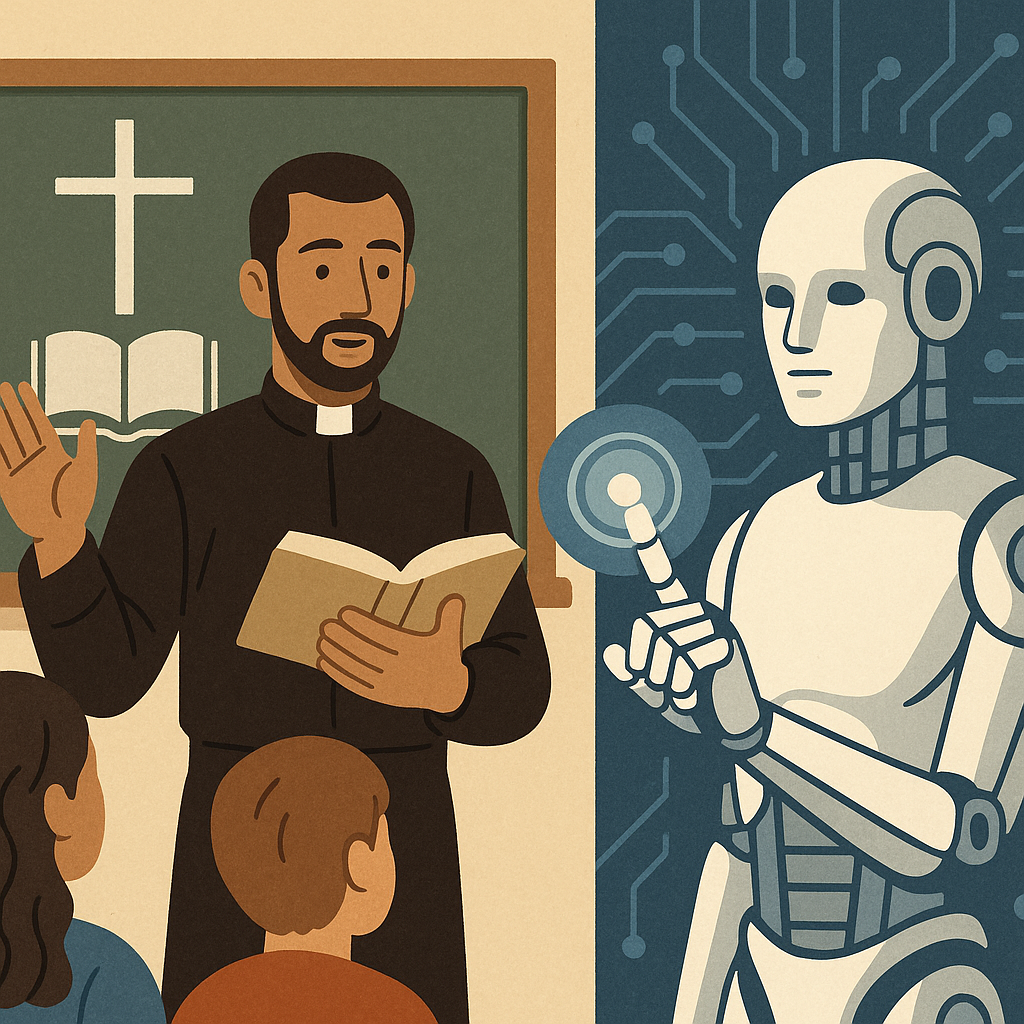Religious Education & AI: What’s Next for Seminaries and Faith Schools?
In the heart of every civilization, religious education has shaped ethics, character, and community values. Seminaries, gurukuls, madrasas, monasteries, and faith-based schools have long been the custodians of moral learning and spiritual depth. But in 2025, as Artificial Intelligence (AI) transforms the way humans think, learn, and interact, the world of religious education stands at a new crossroads.
The question is no longer whether technology should enter faith-based learning — it already has. The real question is how AI will reshape the purpose, pedagogy, and practice of religious education in the years ahead.
A Changing Landscape of Faith Learning
Traditional seminaries and faith schools have always relied on personal mentorship — the living relationship between teacher and disciple. Lessons were oral, reflective, and deeply experiential. But in today’s hyperconnected era, the digital classroom is replacing physical walls, and ancient scriptures are being studied through mobile apps, digital archives, and even AI-powered assistants.
Students of theology now use tools like ChatGPT or BibleGPT to explore religious texts, interpret complex passages, or compare translations instantly. Similarly, Islamic scholars are experimenting with digital Qur’an exegesis tools, while Hindu and Buddhist learners access AI-based Sanskrit translators and guided meditation bots.
This shift marks a profound change — from memorization to exploration, from static learning to dynamic dialogue. AI is no longer just a tool for convenience; it is becoming a partner in spiritual inquiry.
AI as a Spiritual Assistant
AI systems have made religious knowledge more accessible than ever before. A seminary student in Delhi can now listen to a Vatican lecture in real-time, while a monk in Bodh Gaya can study ancient Tibetan texts through digital restoration projects.
Virtual assistants can recommend verses, explain rituals, or even simulate ethical dilemmas for reflection. Imagine a digital teacher that can quote from the Bhagavad Gita, the Bible, and the Quran — drawing thematic connections between compassion, justice, and peace. Such tools allow students to experience interfaith learning in ways that were unimaginable just a decade ago.
Moreover, AI-driven personalization enables each learner to progress at their own pace. It can adjust reading difficulty, suggest context-based interpretations, or provide historical background with a single click.
In essence, AI offers a bridge between the ancient and the algorithmic — blending wisdom with innovation.
Ethical and Theological Dilemmas
However, this transformation raises serious questions. Can a machine truly interpret the divine? Should religious instruction — which has always been rooted in human empathy, faith, and intuition — rely on artificial intelligence?
One major concern is authority. In traditional systems, the authenticity of knowledge depends on the teacher’s spiritual lineage or institutional validation. But when AI generates explanations or theological insights, who ensures doctrinal accuracy? A small error in context or tone could distort centuries of understanding.
There’s also the question of moral agency. AI lacks consciousness; it cannot experience devotion, doubt, or awe — emotions central to the religious journey. While it can teach “about” God, it cannot help someone “feel” God. Therefore, educators must use AI as an aid, not a replacement for human mentorship.
Furthermore, privacy and data ethics are becoming important in seminaries that adopt digital tools. Sensitive discussions on personal belief or confessions must remain confidential. Faith-based institutions must set boundaries to ensure that AI systems do not commercialize or misuse spiritual content.
Reinventing the Role of Teachers and Scholars
Rather than replacing religious educators, AI can help redefine their role. Teachers can use AI to enrich classroom discussions, offer multilingual resources, or simulate historical and ethical scenarios. A theology professor might use AI to show how interpretations of a sacred verse evolved over centuries — empowering students to see religion as a living tradition, not a frozen text.
Similarly, faith schools can integrate AI into practical training — from sustainable temple management to digital sermon writing. In Christian seminaries, priests-in-training already use AI to analyze sermon tone and clarity. In Buddhist monastic schools, young monks learn coding and meditation side by side, preparing for a world where compassion and computation coexist.
Thus, AI does not erase spirituality; it invites it into a new conversation.
AI and Interfaith Dialogue
Perhaps the most exciting potential of AI lies in interfaith education. Machine learning can identify common moral themes across sacred texts, helping students appreciate the shared ethical DNA of religions. AI-powered translation tools can eliminate linguistic barriers that once divided traditions.
Imagine a classroom where Hindu, Muslim, Christian, and Sikh students can study side by side — using AI to explore how their faiths address similar human questions about suffering, love, and justice. This new era of religious education could promote not only intellectual understanding but emotional empathy between communities.
Challenges and the Way Forward
The integration of AI in faith education still faces practical challenges. Many seminaries lack the digital infrastructure or trained faculty to adopt AI responsibly. Others fear cultural dilution or loss of tradition.
To address these concerns, religious institutions must adopt a balanced approach — anchoring technology in values. AI can handle information, but teachers must still guide formation — the inner growth of character and faith.
Collaborations between theologians, educators, and technologists can ensure that innovation serves human flourishing rather than replacing human wisdom. Ethical frameworks for “spiritual AI” must be established to protect authenticity, diversity, and respect.
The Future of Sacred Learning
As 2025 unfolds, seminaries and faith schools stand on the edge of a quiet revolution. The arrival of AI is not the end of tradition — it is its renewal. Just as printing once transformed scripture, AI now transforms access and understanding.
The challenge is to keep the soul of learning alive while embracing the tools of the future. Faith and technology need not be rivals; together, they can illuminate the path toward a more reflective, compassionate, and connected world — where the divine and the digital coexist in harmony.
~Religion World Bureau









